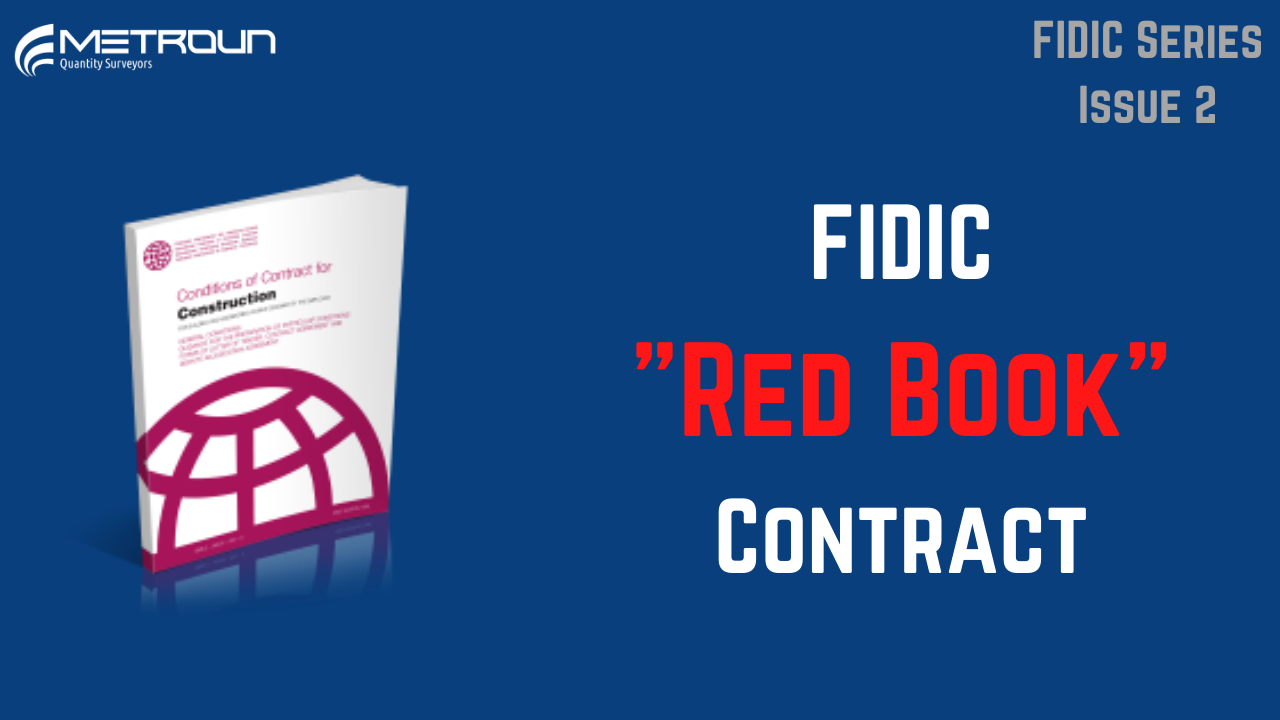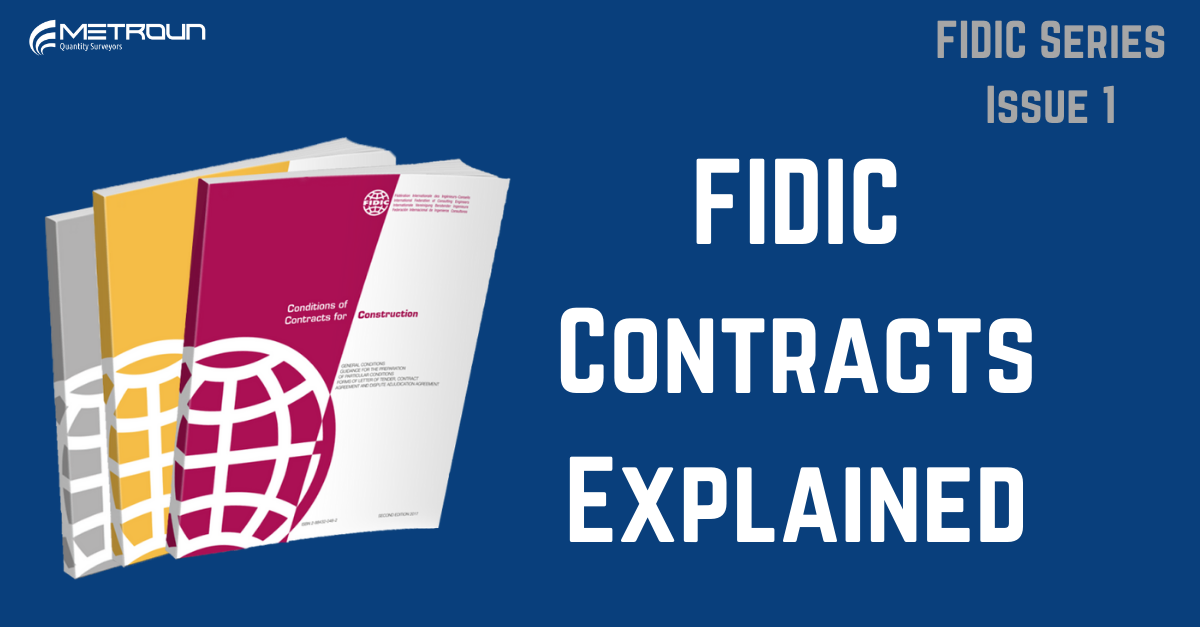
In the UK, JCT contracts are the most commonly used within the construction industry with the NEC form of contracts
Every week on a Wednesday, we provide a new Quantity Surveying or Construction related article that is filled with information. It will always be related to the video that we post on our main YouTube channel.
End of Content.

In the UK, JCT contracts are the most commonly used within the construction industry with the NEC form of contracts

Entering the commercial and professional world of quantity surveying can be daunting for a lot of people, and at first,

Cost Value Reconciliation or CVR for short, is a tool used during a construction project. Typically carried out once a

FIDIC in FIDIC Contracts is a French acronym for Fédération Internationale des Ingénieurs-Conseil. In English, it translates to the International

Quantity Surveyors have the quite unique position of being required for all stages of a construction project, be it pre, during or post the actual construction of a building or road and everything in between. One of the quantity surveyors key and crucial responsibilities comes after a construction project has been completed in the form of a final account. This may be a term you have heard before but what exactly is a final account? Well, if this is what you want to find out, you are in the right place! Final accounts are an important commercial milestone in any construction project. They signify the agreement of the final amount

A number of standard contracts and suite of contracts were consequently written in order to encapsulate a collaborative way of working in the construction industry namely, the New Engineering Contract (NEC3 suite), JCT Constructing Excellence Form (2008) and ACA forms. As the NEC3 and JCT Constructing Excellence Form (2008) are widely the most prevalent (specifically in the UK construction market) these are the two that will be concentrated on within this blog, regarding how the contracts are different and aim to achieve success throughcollaboration. However, Hughes et al (2015) make a key point that is worth noting about collaborative contracting that is important to establish and keep in mind, stating “this kind of contracting does not necessarily cause collaborative ways of working. Rather, collaborative ways of working require contracts of this nature.” Therefore, a client or organisation who adopts such contracts and ways of working will not necessarily achieve enhanced collaboration between all parties involved with a project overnight. It is likely to take time and a change in people’s behaviours and attitudes to fully reap the potential benefits. Despite this,they certainly present more opportunities to be collaborative and facilitate collaborative behaviour better than the traditional forms of contract the construction industry became so accustomed to in the twentieth century. NEC was first published in 1993 and instantly set itself apart from the ‘traditional’ forms of construction contract being used. The NEC was written in “plain language” and advocated itself in being simple to understand and facilitate “good management” practices rather than stifle them (History of NEC, 2018). Consequently, this helped the contract to very quickly become a popular choice among all arms of the construction industry internationally and to beheld in high regards within the eyes of the UK Government (HM Government, 2012). Equally, the JCT Constructing Excellence Contract (JCT/CE) has been described by Sir Michael Lathamwho launched it as “highly readable”, user friendly” and “practical” (Finch, 2018). Again, because of the difference in the way the JCT/CE was written, it is able to promote being the contract of choice on a number of high-profile projects. These include, the Raven’s Enclosure at the Tower of London in 2017, Hampton’s Court in Surrey in 2016 and the Vehicle Operator and Services Agency in Bristol in 2016. Since its introduction in 1993 the NEC contract has developed and grown, culminating in the launch of the NEC3 suite of contracts in 2005. NEC3 is able to boast being the contract of choice on a number of large and impressive projects, delivering on time and on budget (Why NEC, 2018). Not least because of its endorsed and strong promotion of collaboration which looks to share risk and rewards and to be fair to all parties. It is claimed that this is made possible by being built on its three underlying principles: • Clarity and stability • Stimulus to good management • Flexibility (Adapted from: Construction Standard Form Contracts, 2011) Collaboration is at the heart of NEC3 and embedded within the suite of contracts it offers including its framework contract, through mechanisms which aim to build confidence and mutual trust (Chakkol, Selviaridis and Finne, 2018). Chakkol et al, (2018) expand this understanding to mention the key mechanisms include: integrating project teams; collaborative training initiatives; innovative dispute resolution mechanisms; Early Contractor Involvement (ECI) and use of Early Warning Notices (EWN) / Compensation Events (CE) procedure. Likewise, contract clause 2.1 in the JCT/CE states the parties must work together in collaboration, co-operation, in good faith and in a spirit of mutual trust and respect. This contract form too provides mechanisms in order to achieve the objective of collaboration for instance, their “relief events procedure” in clauses 5.7-5.16 inclusive, use of “risk registers” and a strong recommendation of engaging with the supply-chain early on in design. Both contracts specifically include provisions for the appropriate allocation of risk between the relevant parties and clearprocedures which should be followed in order to deal with risks before they occur, during and after. And indeed, one of the most defining and distinct characteristics of collaborative contracting has been identified as giving those involved a method to positively deal with risks in a way that is fair for everyone (Hughes et al, 2015), vastly different to traditional ways of working in construction. Most of the industry now, including clients, seem to want to move away from traditional methods where contractors and clients tended to try and exploit each other through transferal of risk in an adversarial fashion which very often led to disputes and legal battles as explained by Bishop et al, (2009) and Xue et al, (2007). To this end, effective collaboration relies heavily on the way risk is dealt with. Instead of organisations seeking to transfer as many risks as possible to the firms they hold contracts with, which damages relationships, a move is being made towards fairer allocation of risks and dealing with issues together as a team. As Boukendour and Hughes (2014) conclude from their research, “Collaboration involves an equitable sharing of risks and rewards in order to align the interests of the contracting parties, and so to eliminate the adversarial nature of their relationships.” References: Bishop, D., Felstead, A., Fuller, A., Jewson, N., Unwin, L.

The construction industry can be overwhelming. With vast amounts of different job titles, sometimes it can be difficult to differentiate

With more people living in urban cities and heightened global interest being paid to carbon emissions, it’s no wonder there’s

The rise of AI is the great story of our time. Those who have delved online to ask “Will a